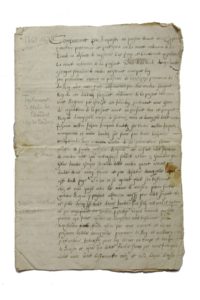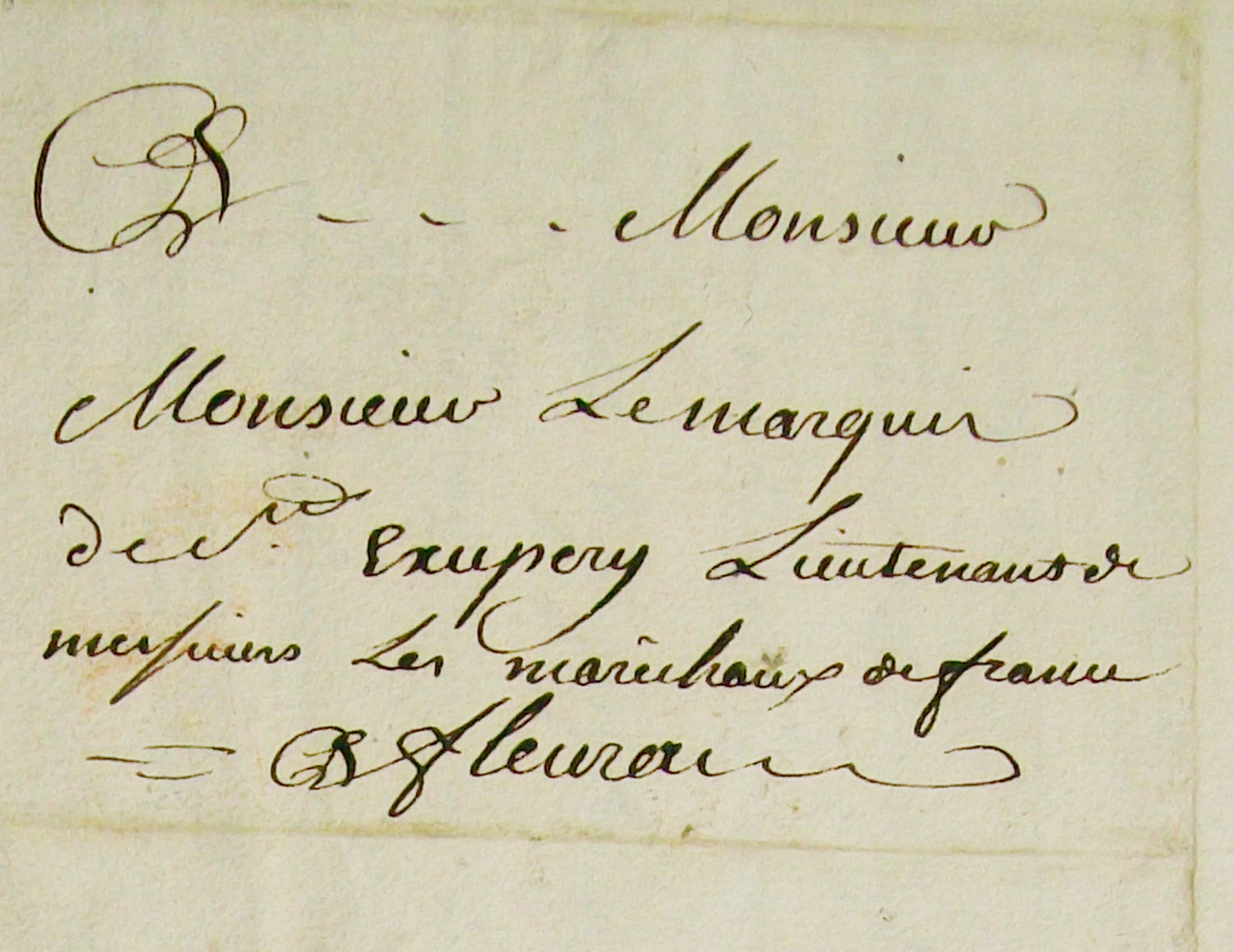The origin of the name "Cardoux"

A NOBLE LAIR
Testament of Hélie de Beaudet 1569-1573 - married to Marguerite de Saint-Ours. This document is drawn up by Cyprien Gauffier, "attorney and practitioner in the ordinary court of La Linde".
He bequeaths the land and the castle of Cardoux.
(Private Collection)
The Château was a den that sheltered supporters of the sling.
This "noble hideout" was probably a protection associated with the nearby Bannes and Badefols sur Dordogne castles.
A DYNASTY OF MASTERS OF FORGES


A HOUSE PASSED ON BY MARRIAGE IN 1734

Joseph de Beaudet, lord of Cardoux, married before 1714 Catherine de Montalembert who gived birth to a daughter, Suzanne de Beaudet (around 1718-1774)
A KNIGHT OF MALTA, DEATH IN THE BATTLE OF THE NILE

To the next generation, Marc-Antoine de Saint-Exupéry born in 1775, became Knight of the minority of Malta, but was released from his wishes because of the events of the Revolution.

The destruction of the "Orient"
during the Battle of the Nile
George Arnald, 1827, National Maritime Museum
... he then became an officer in the French navy and tragically died on board the flagship Orient (118 guns, 1st rank ship), during the naval battle of Aboukir on August 1st, 1798 (also called the battle of the Nile).
Disappeared during this terrible battle, waged by Napoleon Bonaparte against the English, Marc-Antoine was wrongly considered as an emigrant.
A procedure was initiated to restore his honor and memory, in order to avoid the confiscation of his property for the benefit of national property, when he had already given his life for France.
CHAPELLE DE L'IMMACULEE CONCEPTION
« Posuerunt me custodem »
"They made me keeper of their house"
Construction of the chapel began in 1852, on the fondations of an older chapel. It is the work of the architect Vauthier, to whom we also owe the church of Lalinde. On May 28th, 1856, it was the first private chapel in the Dordogne to be dedicated to the Immaculate Conception (1854).
The Bell was melted by the house of Ernest Bollée in 1855. It is baptized under the name of : "Mary conceived without sin".
A FATHER

Father Marie-Jacques-Maxime de Saint-Exupéry (1813/1879) was Vicar General of Perigueux.
Portrait (Private Collection) - Extract from his bibliographic notice :
"Perigord, which is so rich in large families, hardly has any older that that of Saint-Exupéry. We already find its trace in original titles from the 11th century. However, is was only around year 1400 that its filiation is established in a continuous and regular way in the genealogical tables...











